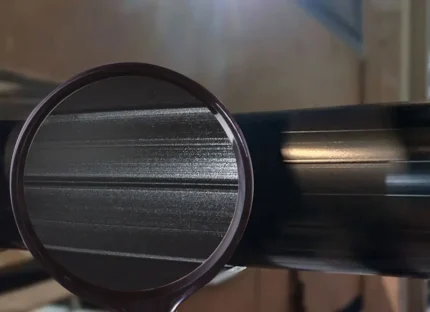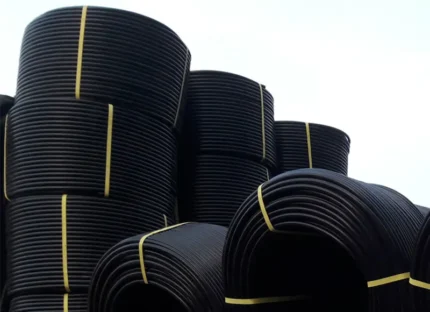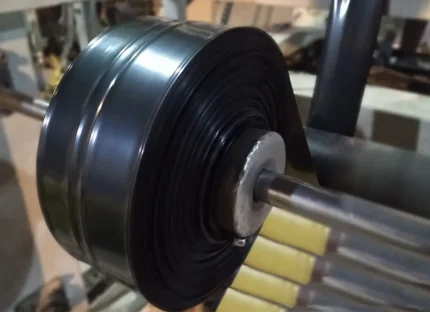Drip Irrigation Tape has a place for water droplets to come out at certain distances. Water is directed from the water inlet holes into the zigzag tube that is designed to lower the water pressure. Based on the tape’s thickness and the distance between seams.
Drip Irrigation Tape has a lot of variations, but the most widely used type of Drip Irrigation Tape has a thickness of 175 and 200 microns, and the distance between emitters (seams) is 20 cm.
Drip Irrigation Tape delivers the water directly to where it is needed. This means less wasted water through evaporation.
Water usage can be reduced by up to %50% when using Drip Irrigation Tape.
Advantages of Drip Irrigation Tape:
Water usage can be reduced by up to %50.
More frequent watering on a targeted system keeps the soil at the optimal moisture level for the plants to thrive, resulting in a higher crop yield.
Due to the small diameter length, there’s no need for high-pressure water.
Drip Irrigation Tape is also used in uneven lands and fields.
As Drip Irrigation Tape is made of polymer, it prevents the sediment of minerals from being deposited in water.
Drip Irrigation Tape is resistant to sunlight, chemicals, fertilizers, and toxins. Due to the uniform water distribution in the drip irrigation system, all plants grow uniformly.
This method doesn’t wet the plant’s branches, stems, and leaves. This significantly reduces the incidence of many plant pests. It’s the most convenient and cost-effective method of drip irrigation for row crops.




